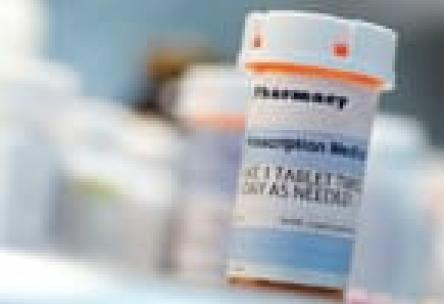America’s opioid crisis has worsened beyond epidemic proportions. You need to know the facts

Opioids have certainly been in the news lately. Health officials at all levels – federal, state, and local – have declared that our country is in the midst of an opioid epidemic that is costing people their livelihoods and their lives through addiction and overdose deaths.
The numbers show that overdose deaths have more than doubled since 2000, with more than 60 percent involving opioids. Given the prevalence of this issue, it is important to understand how opioids work and are prescribed, the risks associated with their use, and how to responsibly dispose of them when no longer needed.
What are opioids?
Opioids, also known as narcotics, such as hydrocodone and oxycodone, are some of the most effective pain medications available. Simply put, they work by reducing the intensity of pain signals that reach your brain, dulling the body’s ability to feel pain.
While the prescription opioids most common today have been around for decades, in the last 18 years the number of prescriptions for opioids has more than quadrupled.
There is no question that prescription opioids can be effective, but they are intended for short-term pain relief, such as pain resulting from injuries suffered in a serious accident or during recovery from major surgery. But, too frequently opioids have been prescribed for longer periods of time beyond what most patients need.
The risks of opioids
Like many medicines, there are potential side effects with the use of opioids, such as dizziness and nausea; however, there are also very serious risks associated with their use beyond three to five days, including dependency and addiction.
Addiction and dependency can force people to seek opioids illegally and can lead to the use of “street drugs” as alternatives, such as heroin, which itself is an opioid. If you are prescribed an opioid by your doctor to help manage your pain, there are some steps you can take to minimize the risk of addiction or overdose:
- Use the lowest dose for the shortest amount of time possible – start low and go slow.
- Never take amounts greater than prescribed.
- Avoid taking opioids with alcohol to minimize the overdose risk.
- Discuss with your doctor other medications you are taking and whether it is advisable to continue while you are using opioids.
- And, follow. up regularly with your doctor to monitor how to medication is working, side effects, or signs of opioid use disorder.
Managing pain without opioids
The good news is there are effective alternatives available to treat pain that present fewer risks, such as over-the-counter medications like ibuprofen and acetaminophen. First and foremost, discuss your pain with your physician who will identify the best options to help minimize and manage your pain. But, understand that there is no one-size-fits-all treatment. Chronic pain may require a combination of different approaches including medication, physical therapy, exercise, and lifestyle adjustments.
Getting help
If you have health concerns related to pain and prescription opioids that you're taking, talk to your doctor or health care provider.
Safely storing and disposing of drugs
Prescription medications can be dangerous and even deadly if they are used by someone other than the person for whom the medicine was prescribed. Safe storage when being used, and disposal when no longer needed, are very important. In addition, it is an unfortunate fact that most teens who abuse prescription drugs get them from a friend or family member.
If you have prescription drugs you no longer need, contact your pharmacy or local police department and ask if it has a take-back program for unused prescription medications. There are also collectors authorized by the Drug Enforcement Agency. More information can be found on its website dea.gov.
If a take-back program or collector is not an option in your area, the U.S. Food & Drug Administration has guidelines on its website for safely disposing of unused medicines. Please visit the Disposal of Unused Medicines: What You Should Know page at fda.gov.